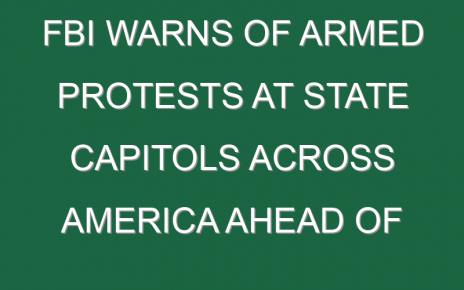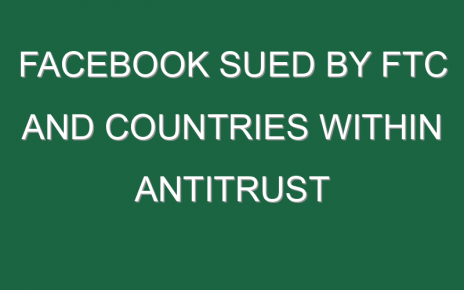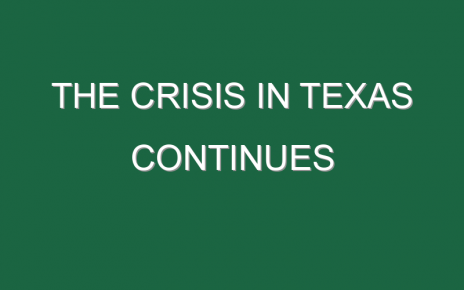In 2019, a pathogen reared its head. By the end of 2020, the novel coronavirus had changed the world—perhaps permanently.
The dizzying cascade of COVID-related events has consumed our lives, and with vaccines now being deployed to some (however unceremoniously), it can be difficult to keep track of just what happened and when.
Stories can mutate just like a virus. Some day in the future, it might be easy or convenient to forget the mental-health toll that COVID has taken on our collective psyche, the unprecedented medical collaboration across public and private entities that birthed the first vaccines, or the grim reality that the United States holds the dual mantles of creating a COVID vaccine and utterly bungling the pandemic as a whole compared to most other nations.
But a world-changing pandemic deserves a chronology. Here’s to posterity.
Nov. 17, 2019
The South China Morning Post reported that China’s first confirmed COVID case traced back to Nov. 17, 2019.
There’s still some conflicting evidence about the precise date since many COVID symptoms resemble the flu, a fact that some politicians and media figures seized on to downplay the pandemic’s urgency.
Jan. 11, 2020
This was a critical day that set the stage for the entire world’s COVID response.
On Jan. 11, Chinese scientists shared the genetic code of the novel coronavirus, back when it was still unclear whether or not it could be transmitted among humans rather than just from an animal to a human.
The scientists shared this code with the world, setting the stage for COVID drug development efforts centered on this information. The code of the virus would eventually lead to the first COVID vaccines by signifying which biological foe to target.
Jan. 20, 2020
By Jan. 20, the first case was reported in the U.S., per the Centers for Disease Control (CDC), in Washington State. But evidence compiled later suggests the coronavirus may have been circulating in America already in December 2019.
Feb. 12, 2020
February was likely the most important month for global health agencies and governments to get their act together to quell the pandemic. It was largely wasted.
In the U.S., the virus was instantly politicized: The federal government underplayed the nature of the threat, creating a sharp partisan divide. Trump administration officials had to tangle an impossible game of dealing with the President’s off-the-cuff and unproved remarks while simultaneously maintaining public safety without causing widespread panic.
The results of that endeavor speak for themselves. On Feb. 12, it had become abundantly clear that the CDC’s coronavirus test just didn’t work. In the initial months of the pandemic, companies such as Quest Diagnostics, LabCorp, Abbott, and others had to step up to fill the void left by the federal government’s failure.
The CDC decision to create its own unique test (which led to the initial supply-chain bottleneck) remains a matter of mystery. Multiple other nations were already deploying their own tests at the time and thus were able to get a handle on their pandemic needs—or at the very least a basic understanding of the data.
In the end, companies had to take up the bumpy task in the U.S. Testing turnaround times took days or even weeks toward the end of the summer, depending on where you lived and what your local government decided appropriate.
It wasn’t just the U.S. that was late to the game. The World Health Organization (WHO) wasn’t ready to dub COVID-19 a pandemic even at the end of February. A pandemic is defined as an infectious disease outbreak that occurs over a wide swath of geography—a fitting description.
March 11, 2020
While the pandemic had begun months before—infectious diseases are always lagging indicators since it takes time to get sick, hospitalized, or die—the extent of this outbreak didn’t really hit until March in the U.S.
On just a single day, March 11, Trump announced a ban on travelers from Europe; Tom Hanks was diagnosed with COVID; and the National Basketball Association (NBA) announced a temporary shutdown.
The coming weeks brought more calamity with office closings, statewide lockdowns, work-from-home routines, and school and business shutdowns. On March 12, the NCAA said it would be canceling its famed March Madness collegiate basketball tournament.
March 27, 2020
As reality set in, the U.S. Congress finally took some action.
Hospitalizations and COVID deaths were surging at this point, and the economy began its pandemic free fall. In response, Trump signed the CARES Act into law on March 27, a $2.2 trillion stimulus package which included direct checks to most Americans and extended unemployment benefits, as well as significant relief for large corporations and small business via loan forgiveness.
The law has its share of critics who say it gives too much to companies and too little to average Americans, who received up to $1,200 depending on their salary. It would also be followed up by subsequent stimulus measures, including a $900 billion bill signed by Trump on December 27.
April 29, 2020
By the end of April, the U.S. had documented one million confirmed COVID cases.
May 1, 2020
The Food and Drug Administration (FDA) was facing the same pressures as the pharmaceutical industry at this point: Get a drug, something, anything, to the market.
Biotech giant Gilead delivered a modest boost to COVID-containment efforts with its experimental drug remdesivir, which goes by the brand name Veklury. The FDA authorized it for emergency use on May 1 to treat some of the sickest, hospitalized COVID-19 patients.
Trump received the drug, alongside several other experimental treatments, when he was hospitalized with COVID in early October.
October 15, 2020
Airlines and the hospitality industry were absolutely decimated by the pandemic as travel plummeted and restrictions were put in place.
But companies eventually had to embrace the reality of the outbreak as it persisted well into the fall. In mid-October, United Airlines even started a contact tracing program at the San Fransisco International airport, a major travel hub, for those who travel to Hawaii.
It’s a voluntary effort that allows customers to bypass Hawaii’s strict requirements such as a mandatory quarantine with a rapid COVID test, which can be taken at the airport.
October 22, 2020
The FDA granted full approval for Veklury to treat certain COVID patients, specifically, older children and adults who are hospitalized with COVID-19. It was the first ever drug to receive an official approval to treat the disease as the agency’s earlier emergency authorization has a lower regulatory threshold.
November 8, 2020
The United States documented more than 10 million cases.
December 11, 2020
Pfizer and German biotech partner BioNTech did what many thought impossible: They developed a COVID vaccine with extraordinary clinical trial results in less than one year.
The science behind this vaccine, as well as a similar one from biotech Moderna, is extraordinary. It harnesses messenger RNA (mRNA) to instruct your body’s cells to create the necessary biological blocks that produce an immune response. Basically, it instructs your internal components on how to react when the real coronavirus villain comes knocking at the door.
The FDA gave the Pfizer vaccine emergency authorization on December 11, setting up a rollout program for high-priority groups within a week. On December 23, the U.S. government reached a deal with Pfizer to procure an additional 100 million doses of its vaccine.
December 13, 2020
Vaccines officially started going out to the high-risk groups identified by the CDC on December 13, including health care workers and nursing home patients.
Doling out the doses presents its own logistical nightmares, however, including ones that states are dealing with to this day. Prioritization of states, medical facilities, and the staff within those facilities are complex decisions which require a thorough examination of personnel and what their duties entail.
It’s like checking off items on a to-do list except not everyone has the same conception of what needs to be done. The federal government is coordinating with logistics firms and vaccine manufacturers before shipping doses out to state governments.
Those state governments must then make individual decisions about how to disperse these doses, requiring leaders to figure out how to allocate them to people who need a COVID vaccine most. The federal government has not provided a clear-cut roadmap; it is a series of suggestions.
December 18, 2020
The FDA authorizes Moderna’s mRNA-based COVID vaccine.
December 21, 2020
President-elect Joe Biden, following other major political figures such as former Presidents Barack Obama, George W. Bush, and Bill Clinton who have pledged to do the same, receives a COVID vaccine on live television to build public trust.
December 29, 2020
President-elect Joe Biden slammed the U.S. COVID vaccination effort at the end of the year.
Alongside vice president-elect Kamala Harris, Biden criticized the merely 2.1 million doses which have been distributed to date—a far cry from the 20 million promised. He says that under his administration, 100 million doses should be distributed to Americans based on priority and in a speedier fashion, in his first 100 days.
Vaccines still aren’t expected to be available to the mass public until at least the late spring, and perhaps not even until the early fall of 2021, according to Vivek Murthy, Biden’s pick for Surgeon General.
December 30, 2020
As of December 30, there were more than 19.5 million COVID cases in America and nearly 340,000 COVID-related deaths, according to Johns Hopkins.
Cases began surging again in the late fall in the midst of pandemic fatigue, the holiday season, and colder weather forcing people to be indoors where the virus may spread more easily.
More health care and Big Pharma coverage from Fortune:
- The COVID-19 vaccine rollout is dangerously flawed. Science and data could fix it
- These Asian countries have masterfully limited COVID outbreaks. Here’s how they did it
- COVID vaccine recipients may still be infectious. When will we know for sure?
- COVID vaccine allergies are raising concerns. Most Americans should still get their shots
- What to know about the CDC’s new COVID vaccine guidance for people with health conditions





